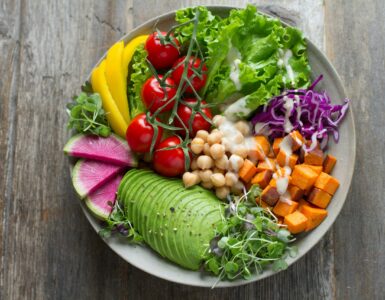One of the biggest challenges for those struggling to lose weight and improve fitness is giving up their favorite foods. However, not all bad foods deserve their negative reputation. While high-calorie, salty, sugary, and fatty items can contribute to health risks, many offer surprising nutritional benefits. For example, some bad foods contain essential vitamins, minerals, and antioxidants that support overall wellness. When consumed occasionally and in moderation, these foods can complement a balanced diet. Moreover, understanding the good news about some supposedly bad foods helps people make informed, realistic choices. Instead of strict avoidance, smart inclusion promotes sustainable, healthy eating habits.
Red Meat
Red meat often lands on lists of bad foods, but the story is more nuanced than many headlines suggest. While excessive consumption of processed meats raises health concerns, lean, unprocessed red meat offers valuable nutrition. It provides high-quality protein, iron, zinc, and vitamin B12—nutrients essential for muscle growth, immune support, and cognitive function.
Recent studies challenge the belief that red meat should be avoided entirely. A 2019 review found weak evidence linking moderate red meat intake to chronic disease. Researchers emphasized that lifestyle and overall diet play a larger role in health outcomes than any single food.
Choosing lean cuts like sirloin or flank steak and practicing portion control makes red meat a smart addition to balanced meals. Cooking methods also matter—grilling or baking is preferable to frying. For those at risk of nutrient deficiencies, including older adults and pregnant women, red meat can help meet dietary needs.
Unprocessed red meat, consumed in moderation, deserves reconsideration among supposedly bad foods. It connects us to ancestral diets and remains a staple in many cultures. When paired with vegetables, whole grains, and healthy fats, red meat supports a nutrient-dense eating pattern that aligns with modern wellness goals.
Eggs
Eggs often appear on lists of bad foods due to their cholesterol content, but recent research paints a more balanced picture. One large egg contains about 186 milligrams of cholesterol, yet it has minimal saturated fat and no trans fat.
For most healthy individuals, eating up to one egg daily does not increase heart disease risk. In fact, eggs provide high-quality protein, essential amino acids, and nutrients like choline, lutein, and vitamin D. These support brain function, eye health, and immune strength.
Concerns about cholesterol stem from outdated assumptions. Studies now show that saturated and trans fats impact heart health more than dietary cholesterol. People absorb cholesterol differently, so eggs may not affect everyone’s blood levels the same way.
Eggs are affordable, versatile, and nutrient-dense. When consumed in moderation and prepared healthfully, they deserve reconsideration among supposedly bad foods. Scrambled, poached, or boiled—eggs can be part of a balanced, heart-smart diet.
Warnings about high cholesterol have persuaded many people to give up eggs. However, this breakfast staple provides protein, vitamins and minerals. The white part is much more nutritious, and has less fat and cholesterol, than the yolk.
Butter – Good News About Some Bad Foods
Butter has long been labeled one of the bad foods due to its saturated fat content. However, recent research challenges this outdated view. Studies now show no direct link between moderate saturated fat intake and heart disease.
Butter is a natural dairy product made by churning cream. It contains fat-soluble vitamins like A, D, E, and K2, which support immune and bone health. Unlike processed seed oils, butter has a simple composition and has been part of traditional diets for centuries.
The diet-heart hypothesis from the 1950s blamed saturated fat for clogged arteries. Yet newer studies reveal inflammation and oxidized LDL cholesterol—not butter—play a larger role in heart disease. Replacing butter with refined oils may increase chronic inflammation and oxidative stress.
When consumed in moderation, butter offers flavor and nutrition. It deserves reconsideration among supposedly bad foods. Choosing grass-fed varieties enhances omega-3 content and supports a balanced, whole-food approach to eating.
Potatoes
Potatoes often appear on lists of bad foods, mostly due to their carbohydrate content and frequent association with frying. However, when prepared healthfully, potatoes offer impressive nutritional benefits. They contain vitamin C, potassium, magnesium, and fiber, while remaining low in calories, fat, and sodium.
The real issue lies in preparation. French fries and chips, often cooked in unhealthy oils and paired with processed toppings, contribute to poor health outcomes. In contrast, boiled, baked, or mashed potatoes—especially with skins—retain nutrients and support digestive health through resistant starch.
Potatoes rank high on the satiety index, meaning they help you feel full longer. This can reduce overall calorie intake and support weight management. Their resistant starch also promotes gut health and may lower the risk of diabetes and colon cancer.
Rather than labeling potatoes as bad foods, consider their context. When paired with lean proteins and vegetables, they support a balanced, nutrient-rich diet.
Nuts
Nuts are often labeled as bad foods due to their high fat content, but this reputation overlooks their nutritional value. Most nuts contain heart-healthy unsaturated fats, fiber, and plant-based protein. These nutrients support satiety, metabolic health, and long-term weight management.
Studies show that eating nuts regularly may reduce LDL cholesterol and inflammation, both linked to heart disease. Almonds, pistachios, and walnuts are especially rich in phytosterols, which help lower bad cholesterol levels. Hazelnuts and pecans also support cardiovascular health when eaten in moderation.
Despite being calorie-dense, nuts do not necessarily cause weight gain. Their combination of fiber, protein, and healthy fats helps control appetite and improve diet adherence. A small handful—about one ounce—is considered a healthy serving.
Rather than avoiding nuts as bad foods, include them in meals or snacks. Choose unsalted, raw, or dry-roasted varieties to maximize benefits. Avoid sugar-coated or heavily salted options that diminish their health value.
Coffee – Good News About Some Bad Foods
Coffee often lands on lists of bad foods due to its caffeine content and perceived health risks. However, recent research suggests moderate coffee consumption offers several health benefits. Studies link regular coffee intake to reduced risks of Parkinson’s disease, type 2 diabetes, and certain liver conditions.
Caffeine, the primary active compound in coffee, enhances alertness, focus, and mood. It stimulates the central nervous system and may reduce the risk of depression in some individuals. Coffee also contains antioxidants and polyphenols that support cellular health and reduce inflammation.
For most healthy adults, up to 400 milligrams of caffeine daily—about four 8-ounce cups—is considered safe. Exceeding this amount may lead to side effects like insomnia, anxiety, or increased heart rate. People sensitive to caffeine or pregnant individuals should limit intake to 200 milligrams per day.
When consumed in moderation and without excessive sugar or cream, coffee deserves reconsideration among supposedly bad foods. Brewed thoughtfully, it can be a flavorful and health-supportive part of your daily routine.
Wine and Beer
Wine and beer often appear on lists of bad foods due to their alcohol content and potential health risks. However, moderate consumption may offer some benefits when paired with a healthy lifestyle. Red wine contains resveratrol, an antioxidant linked to heart health and reduced inflammation.
Beer, especially darker varieties, provides small amounts of B vitamins, magnesium, and antioxidants. Some studies suggest moderate beer intake may lower the risk of kidney stones and improve bone density. The key is moderation—defined as one drink per day for women and two for men.
Recent research urges caution, noting that even moderate alcohol intake may increase cancer risk. Experts recommend weighing personal health factors before including alcohol in your diet. Excessive drinking clearly raises the risk of liver disease, heart problems, and addiction.
Rather than labeling wine and beer as bad foods, consider context and quantity. When consumed responsibly, they may complement social connection and relaxation without compromising long-term health.
Dark Chocolate – Good News About Some Bad Foods
Dark chocolate often appears on lists of bad foods due to its sugar and fat content. However, high-quality dark chocolate offers notable health benefits when consumed in moderation. It contains antioxidants, fiber, and essential minerals like magnesium, iron, and copper.
The flavanols in cocoa support heart health by improving blood flow and reducing inflammation. Studies show dark chocolate may lower blood pressure and LDL cholesterol. These effects contribute to reduced risk of cardiovascular disease and stroke.
Dark chocolate also supports brain function. Flavonoids enhance blood flow to the brain and may protect against cognitive decline. Some research suggests it may improve mood and reduce stress by influencing gut microbiota and lowering cortisol levels.
Despite its calorie density, dark chocolate can fit into a balanced diet. Choosing varieties with at least 70% cocoa and minimal additives maximizes benefits. Rather than dismissing it as one of the bad foods, consider it a nutrient-rich indulgence with protective properties.



